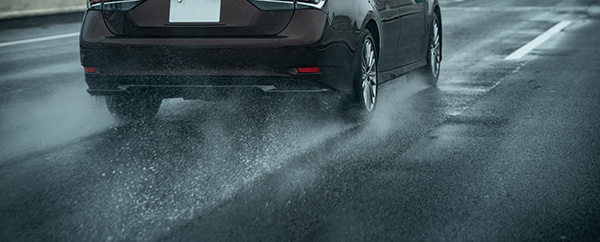
Hydroplaning is one of the most terrifying experiences a driver can encounter. Imagine cruising down a rainy highway when suddenly, your car feels like it's floating, and you lose control of your steering. This heart-stopping event, known as hydroplaning, can happen in an instant. But what exactly causes hydroplaning, and more importantly, how can you prevent it from happening? Let's dive into the causes of hydroplaning and explore practical steps you can take to stay safe on wet roads.
Hydroplaning occurs when a layer of water builds up between your vehicle's tires and the road surface, leading to a loss of traction that prevents your tires from gripping the road effectively. This loss of traction can cause your car to skid or slide uncontrollably, making it difficult to steer, brake, or accelerate safely. Hydroplaning can happen in a flash, and it doesn't require a large amount of water—just a thin layer can be enough to cause problems, especially at higher speeds.
The Primary Causes of Hydroplaning
Speed
Speed is a significant factor in hydroplaning. The faster you drive, the more likely you are to hydroplane because your tires have less time to displace water. Once you reach speeds of around 35 mph, your chances of hydroplaning increase dramatically, especially if there is a substantial amount of water on the road.
Tire Condition
The condition of your tires plays a crucial role in preventing hydroplaning. Worn-out tires with shallow tread depth are less effective at channeling water away from the contact surface, making hydroplaning more likely. Tires are designed with grooves and patterns to help manage water, but if these grooves are worn down, their ability to prevent hydroplaning is significantly reduced.
Water Depth
The amount of water on the road also affects the risk of hydroplaning. Even a thin layer of water can cause hydroplaning if your speed and tire condition are not optimal. However, deeper puddles pose an even greater threat, as more water needs to be displaced to maintain tire contact with the road.
Road Surface
Different road surfaces can influence the likelihood of hydroplaning. Smooth, flat roads are more prone to water buildup, while roads with proper drainage and texture can help reduce the risk. Oil and grease on the road surface, commonly found on busy highways, can also exacerbate hydroplaning conditions.
How to Prevent Hydroplaning
Maintain Proper Tire Tread
One of the best ways to prevent hydroplaning is to ensure your tires are in good condition. Regularly check your tire tread depth using the penny test—insert a penny into your tire's tread grooves with Lincoln's head upside down. If you can see the top of Lincoln's head, it's time to replace your tires. Proper tread depth helps channel water away from the tire surface, maintaining better contact with the road.
Monitor Tire Pressure
Keeping your tires properly inflated is crucial for preventing hydroplaning. Underinflated tires can't maintain optimal contact with the road, increasing the risk of hydroplaning. Check your tire pressure at least once a month and before long trips, and ensure they are inflated to the manufacturer's recommended levels.
Reduce Speed in Wet Conditions
Slowing down when driving in wet conditions is essential to prevent hydroplaning. Lower speeds give your tires more time to displace water, maintaining better traction. As a rule of thumb, reduce your speed by at least a third when driving on wet roads.
Avoid Sudden Movements
Sudden movements, such as quick turns or abrupt braking, can trigger hydroplaning. Drive smoothly and avoid making sudden changes in direction or speed. Gradual acceleration and deceleration help maintain better control of your vehicle.
Choose the Right Tires
Investing in tires designed for wet conditions can significantly reduce your risk of hydroplaning. All-season tires or those specifically labeled for wet weather offer better performance on wet roads. These tires typically have deeper grooves and advanced tread patterns to enhance water evacuation.
Maintain a Safe Following Distance
Keeping a safe distance from the vehicle in front of you gives you more time to react to sudden stops or changes in traffic conditions. This is especially important in wet conditions, where stopping distances are increased due to reduced traction.
What to Do If You Hydroplane
If you find yourself hydroplaning, it's crucial to stay calm and avoid panicking. Here are the steps to follow:
- Ease Off the Accelerator: Gently lift your foot off the gas pedal to reduce speed. Do not slam on the brakes as this can cause your vehicle to skid further.
- Steer Straight: Keep the steering wheel straight and avoid making sudden turns. If you need to make corrections, do so gently.
- Wait to Regain Traction: As your vehicle slows down, your tires should regain contact with the road. Once you feel the tires reconnect, you can resume normal driving with caution.
Ensure your tires are road-ready for any conditions and ensure your safety! Book your tire maintenance appointment at Autoworks Of Issaquah today!